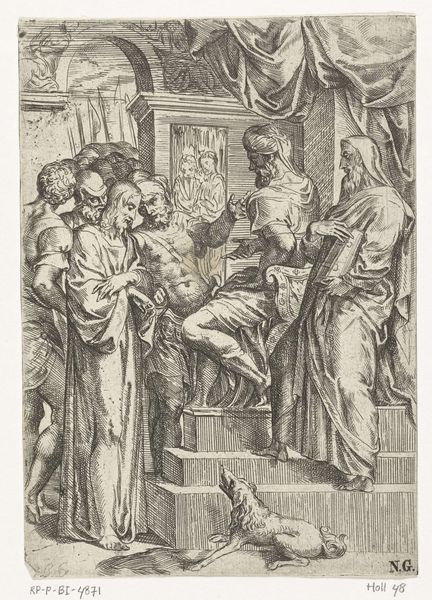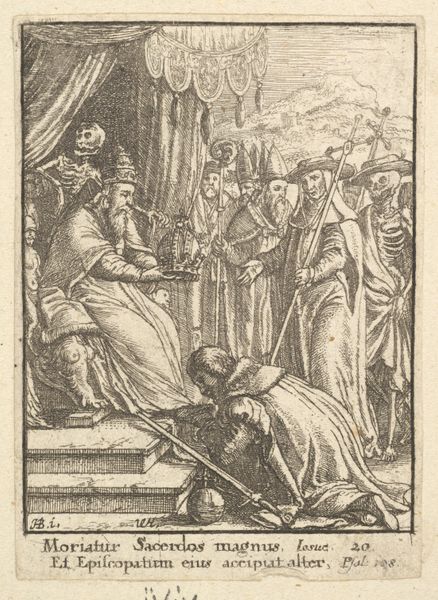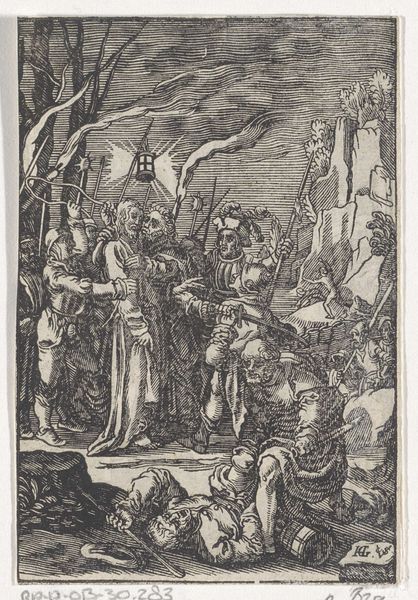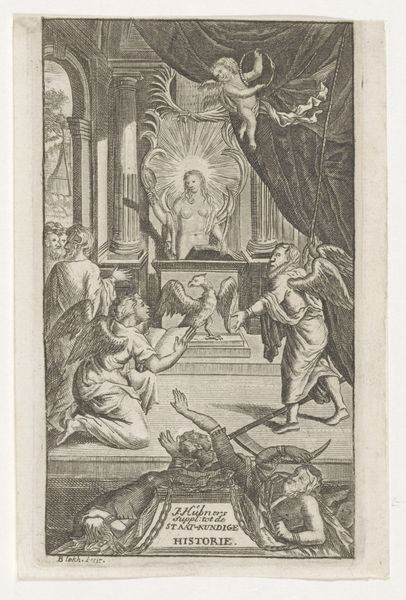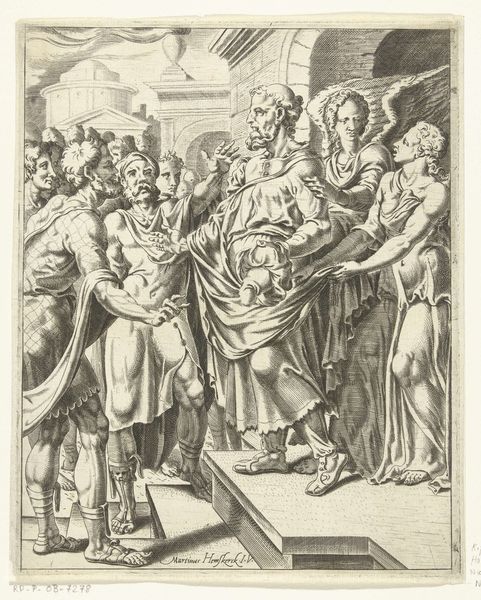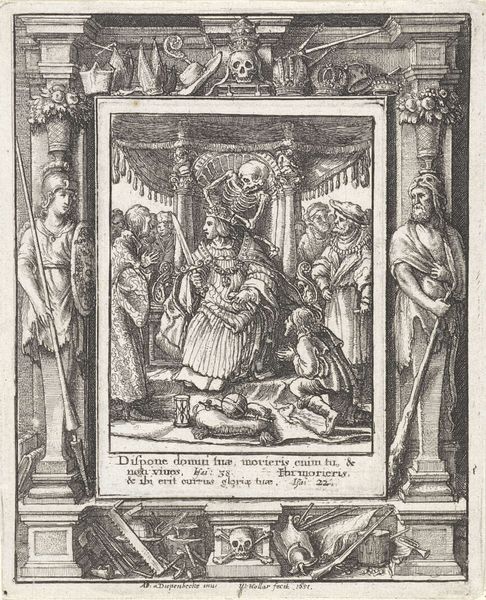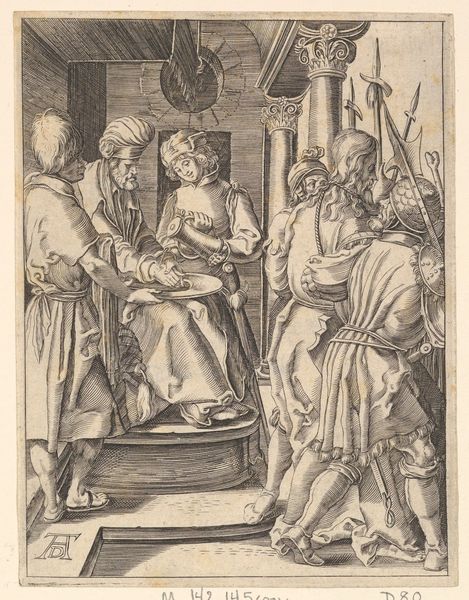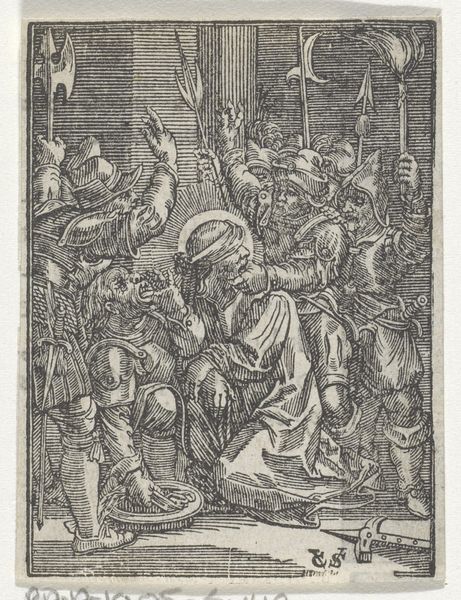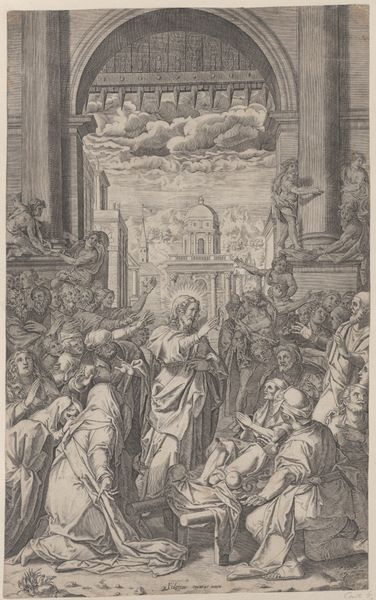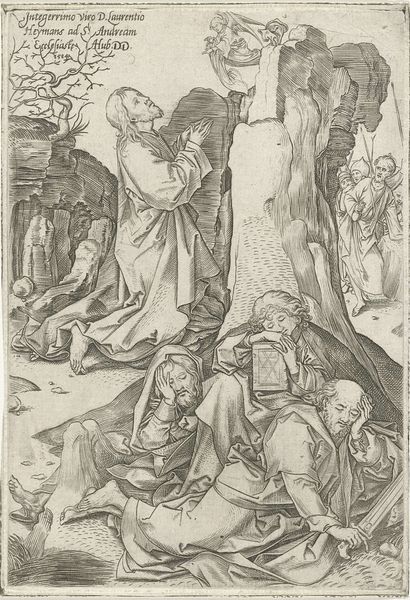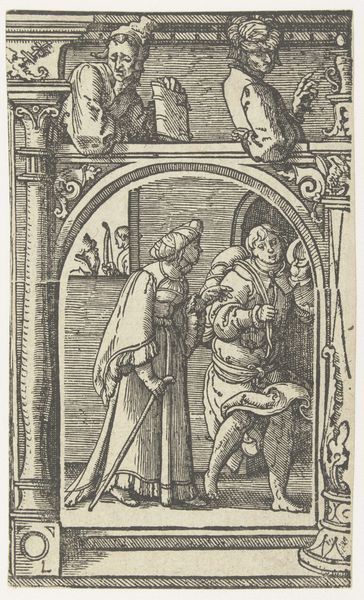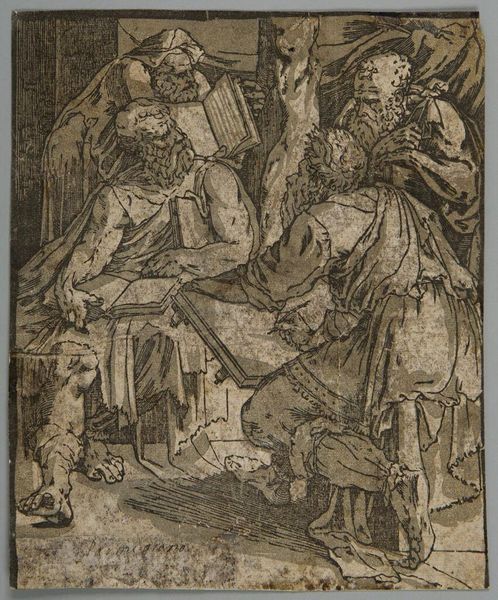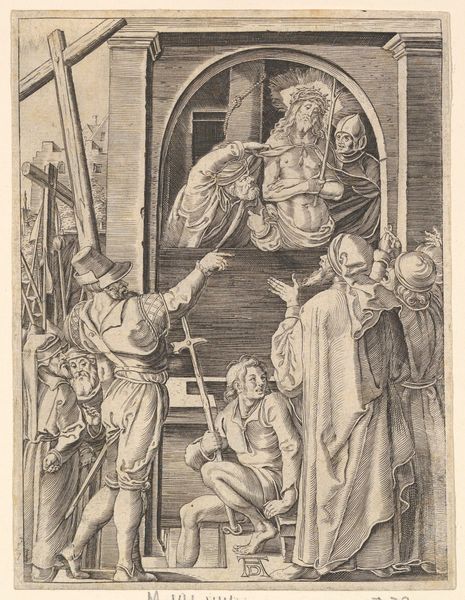
print, engraving
# print
#
figuration
#
11_renaissance
#
line
#
history-painting
#
northern-renaissance
#
engraving
Dimensions: height 240 mm, width 187 mm
Copyright: Rijks Museum: Open Domain
Curator: Dirck Volckertsz Coornhert created this engraving, titled “Huwelijksnacht van Tobias en Sara,” around 1548. What's your immediate take? Editor: It has a curiously formal stillness despite the implied intimacy of the subject matter. I feel as if I'm observing something deeply personal and yet everyone in the scene, even the demon overhead, is posed for maximum decorum. Curator: Let's consider the medium itself, an engraving. Each line is deliberately etched, a physical labor of mark-making that contributes to this very controlled aesthetic. It also allowed for dissemination and distribution. These weren't private commissions; they were designed to circulate within a specific market and to transmit certain narratives, influencing societal views and behaviors around marriage. Editor: Precisely. The story itself, from the Book of Tobit, is incredibly important here. Sara has been plagued; a demon kills her suitors on their wedding nights. The angel Raphael intervenes, allowing Tobias to break this cycle through prayer. This print, therefore, functions as both a visual narrative of the biblical story and a reinforcement of prescribed gender roles, of the woman needing male and divine intervention to achieve marital success and safety. Curator: We also have to remember who the intended audience was and where and how this print was being made and purchased. The production of paper, inks, and the technical skill involved with engraving point to specific craft networks, workshops, and systems of apprenticeship that were key to visual culture. This print shows us more than an artist working alone. Editor: Yes, and consider the implication of disseminating this story and images to a broad audience. Marriage in the 16th century was far from an individual choice but had major ramifications regarding property, family alliances, and inheritance. The artist is engaging directly with concerns central to Dutch society and family power structures. Curator: This brings an awareness of how prints are produced, distributed, consumed, and contextualized. And I believe our investigation has also highlighted the way visual materials can work as both records of a time, as well as tools to encourage ideological behavior and roles, not to be separated when it comes to truly learning. Editor: Exactly, art, whether high or low, exists in a complex dialogue with the sociopolitical contexts from which it originates. Approaching from various perspectives illuminates not just this engraving, but it enhances an awareness of marriage and gender from both a historical and still resonant contemporary viewpoint.
Comments
No comments
Be the first to comment and join the conversation on the ultimate creative platform.
